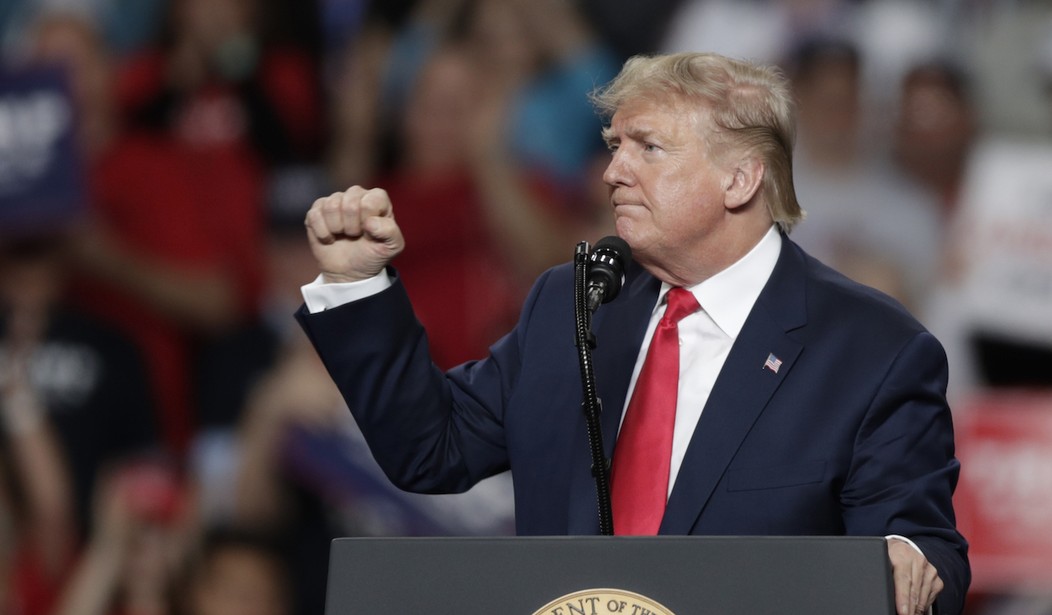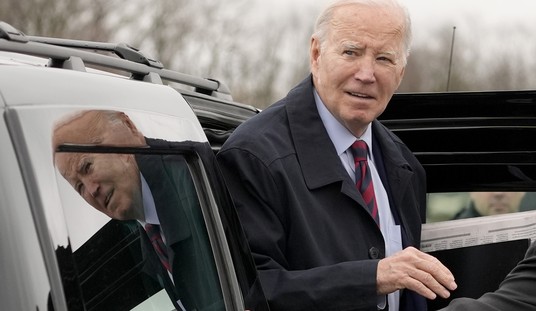Even as Democrats try to undermine President Trump on the world stage with their partisan impeachment circus, he continues to forge ahead, signing a truly historic “Phase One” trade deal with China on Wednesday. This deal serves as a total validation of Trump’s tariff-oriented trade strategy, will provide a material boost to the US economy in 2020-2021, and could lay the groundwork for a smarter relationship with China over the coming decade.
For two years, Democrats and Chamber of Commerce Republicans told us Trump would make no progress confronting China with tariffs. They would crush the US economy, and the US was not strong enough to do battle with the so-called “long term thinkers” in Beijing. It’s rather fitting then that the same day we signed Phase One, it was announced core input prices rose at the slowest pace since 2016, so much for tariff-related inflation! Prices of tariffs goods like furniture and appliances are rising slower than overall inflation. China has paid for these tariffs; their exports to the US have fallen by over 20%, squeezing their economy, and forcing them to reach a deal.
The lopsided nature of this deal speaks to America’s incredible leverage in the talks because China could not afford to lose access to our market while we can and have been sourcing imports from elsewhere. China has agreed to substantive improvements in its intellectual property laws, shifting legal burdens and processes more akin to America’s system, increasing punishments for violations, and making concrete pledges to stop technology transfers. China also agreed to enhanced protection for pharmaceuticals and to level the playing field for financial companies.
Recommended
Most remarkably, China promised to buy $200 billion more American products than in 2017, which would be a 50+% jump (about $75 billion in 2020 and $125 billion in 2021). These purchases include $78 billion of manufactured goods, $32 billion of agriculture, $52 billion of energy, and $38 billion of services. These purchases represent gigantic increases that some US producers may actually struggle to meet, particularly in energy. Others, like aircraft orders, will likely be filled and delivered subsequent to 2021. Even if, to be conservative, only half of these purchases are met with new American production in 2020, that would increase GDP by at least 0.25%.
Ever since foolishly permitting China’s entrance into the WTO, American Presidents have pretended Communist China was a “market economy” despite its totalitarian nature and central planning structure. Trump is dealing with China that exists, not the one that we wished existed. Chinese firms largely act at the behest of President Xi’s government. Rules alone will not lead to equitable treatment. When faced with a government-commanded economy, we must ensure that the government commits to buy our products. China has now done that.
Now, will China fairly implement its commitments or make these purchases? Only time will tell, and fortunately, in the case of these purchases, we will know quickly, based upon trade statistics. If China can’t follow through on the clearest commitments, the entire world will see China cannot be trusted. Fortunately, Trump is keeping the 25% tariffs on $250 billion of Chinese goods entirely in place while just reducing the 15% rate on $115 billion to 7.5%. By keeping these tariffs in place until and unless there is a Phase Two deal, which is at least a year away, China has every incentive to comply with the deal. Put simply, tariffs worked.
The potential genius of this agreement is Trump can leverage this new status quo to get an even better Phase Two deal. Under Phase One, China will buy more American products than ever before while we keep over 90% of our tariffs in place (this statement alone shows how one-sided the deal was). By raising the cost of production, tariffs incentivize companies to move their supply chains. However, for companies to go through the process of investing elsewhere and moving production they have to believe tariffs will be in place for a prolonged period of time; otherwise, they will try to wait out the tariffs.
As such, Trump should take his time with Phase Two talks. America’s farmers, manufacturers, and other exporters will be enjoying record China sales, essentially meaning China has given up what leverage it has in the talks. China’s attempt to punish our farmers for backing Trump has ended, a miserable failure.
By retaining this status quo where China buys our goods and pays tariffs, our producers do well, and our companies will continue to leave China, providing a further boost to our economy and damaging their fragile ones. Time is now squarely on our side. With Phase One in hand, the status quo is extremely favorable to America, almost negating the need for there ever to be another agreement so long as the current tariffs remain in place.
Indeed, the potential pitfall of this deal is that we trade too much with China. China is a totalitarian human rights abuser undermining international law in the South China Sea and elsewhere to further its imperial aims. They are our primary geopolitical foe. Just as we must reverse our dependence on Chinese imports to protect our economy from potential geopolitical abuse, we cannot let sectors of our economy become dependent on selling exports to China. We should seek to balance our economic relationship with China while also managing its size to keep ourselves sufficiently insulated from abuse. Similarly, we must avoid technological or financial entanglements that could threaten national security.
Phase One is a complete and total vindication of Trump’s trade policy, delivering substantive wins on IP and reducing the trade deficit while barely giving any concessions at all. This deal also puts time squarely on our side as tariff permanence will further accelerate the movement of manufacturers out of China and back home to the US.
Despite the doomsday proclamations, America’s economy is stronger than ever, and our trading relationship with China has taken a historic step forward, thanks to Trump’s trade approach. Perhaps his naysayers ought to give the Art of the Deal another read.
























Join the conversation as a VIP Member